Tall and Large Trees (40 feet and up)
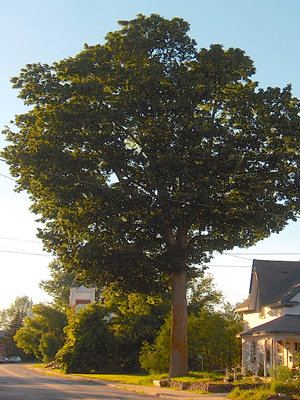
Acer nigrum (Black maple). Exposure: part sun/shade. Soil requirements: rich/calcareous soils. Deer resistance: medium. Habitat: woodland. Specifics: subspecies of sugar maple, can hybridize. Straight central trunk in the forest or widely spreading branch system in the open.
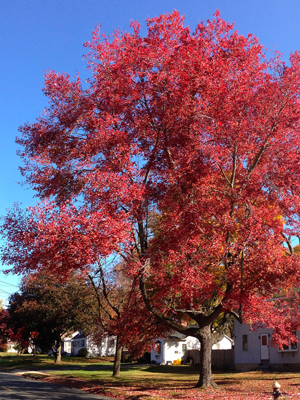
Acer rubrum (Red maple). Exposure: sun/partial shade. Soil requirements: dry/medium/moist. Deer resistance: medium Habitat: border/woodland-edge Specifics: earliest flowers, drought tolerant, earliest flowers, drought tolerant, best for side and back yards. pest-free and pollution tolerant.
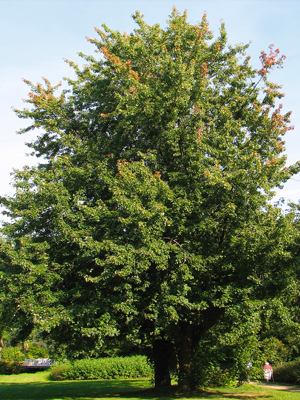
Acer saccharinum (Silver maple). Exposure: part shade/shade. Soil requirements: medium/moist. Deer resistance: medium woodland. Specifics: Earliest spring flowers, best for side and back yards. Attractive leaves with light undersides. Brittle – don’t plant near buildings, or high-traffic areas.
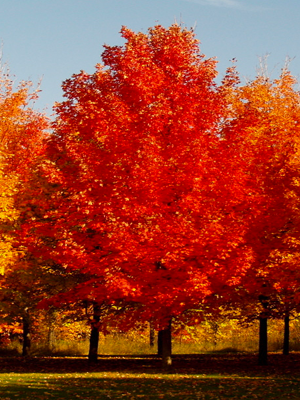
Acer saccharum (Sugar Maple). Exposure: sun/part shade. Soil requirements: medium/moist. Deer resistance: medium. Specifics: State tree, early spring flowers, salt intolerant, source of maple syrup, border/woodland-edge, copes well with climate change.
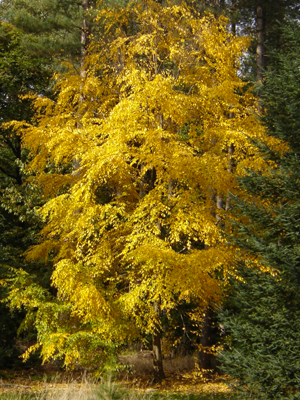
Betula lenta (Black or Sweet birch). Exposure: sun. Soil requirements: moist /rich. Deer resistance: medium. Habitat: forest ravine. Specifics:wintergreen scent, copes well with climate change.
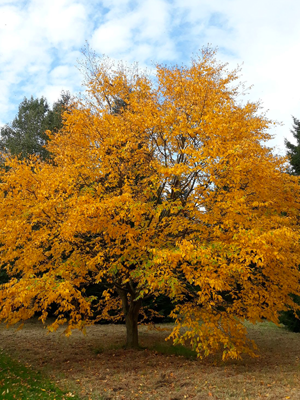
Betula alleghaniensis (Yellow birch). Exposure: sun/part shade. Soil requirements: moist/rich. Deer resistance: low. Habitat: forest ravine, swamp. Specifics: Interesting bronze colored flaky bark. Tallest of the birch species. Long lived.
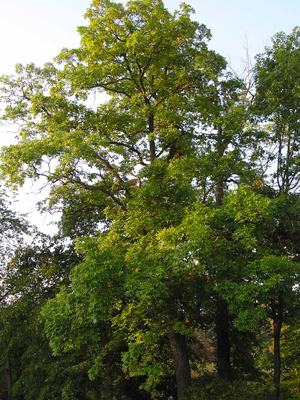
Carya glabra (Red/pignut hickory). Exposure: sun. Soil requirements: dry/well drained. Deer resistance: medium. Habitat: woodland/thickets/slopes Specifics: taproot, suitable as street tree. Heavy nuts so don’t plant above parking areas.
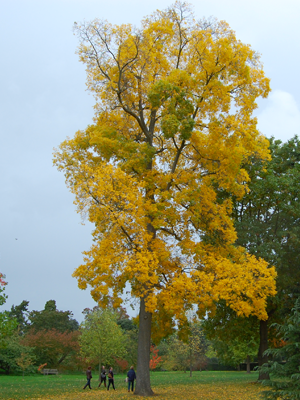
Carya cordiformis (Bitternut hickory). Exposure: sun. Soil requirements: moist. Deer resistance: medium. Habitat: floodplain. Specifics: intolerant of shade, taproot. Heavy nuts so don’t plant above parking areas.
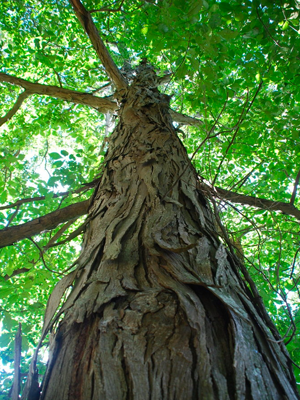
Carya ovata (Shagbark hickory). Exposure: sun. Soil requirements: moist/rich. Deer resistance: medium. Habitat: woodland/thickets. Specifics: showy bark, long lived, suitable as street tree, copes well with climate change, taproot. Heavy nuts so don’t plant above parking areas.
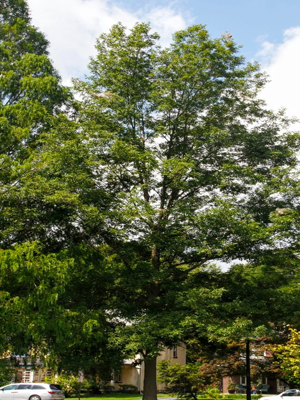
Carya tomentosa (Mockernut hickory) Exposure: sun. Soil requirements: medium/moist/well drained. Deer resistance: medium. Habitat: woodland/thickets/upland/slopes. Specifics: most abundant of the hickories, taproot. Heavy nuts so don’t plant above parking areas.
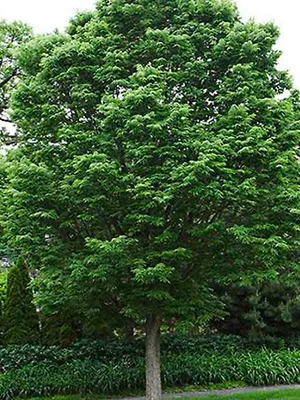
Celtis occidentalis (Common hackberry). Exposure: part shade. Soil requirements: medium/wet. Deer resistance: medium floodplain/thickets. Specifics: broad, rounded, open crown of spreading or slightly drooping branches. Fruit dull red. Can be used as street tree.
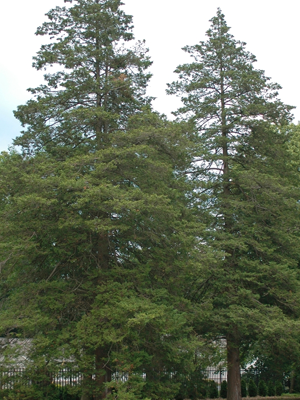
Chamaecyparis thyoides (Atlantic white cedar). Exposure: sun/part shade. Soil requirements: average/moist. Deer resistance: low. Habitat: swamps Specifics: conifer, long lived, can be used as specimen tree or windbreak.
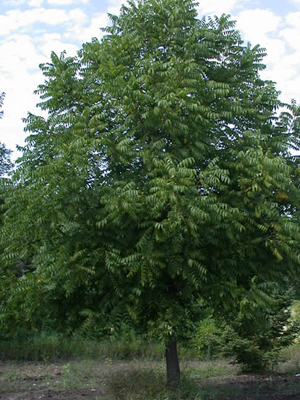
Juglans nigra (Black walnut). Exposure: sun. Soil requirements: well drained/rich. Deer resistance: high. Habitat: riparian zones. Specifics: intolerant of shade, allelopathic, edible, buy disease resistant strains.
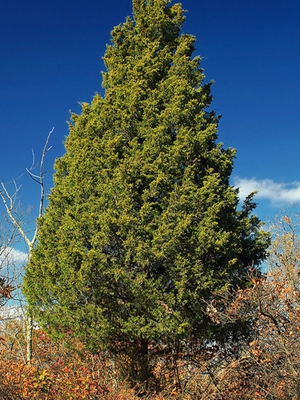
Juniperus virginiana (Eastern red cedar). Exposure: sun. Soil requirements: dry. Deer resistance: medium. Habitat: shelter belt, poor soil. Specifics: conifer, slow growing, can suffer from Cedar apple rust; plant away from rosaceae by 500 feet, copes well with climate change.
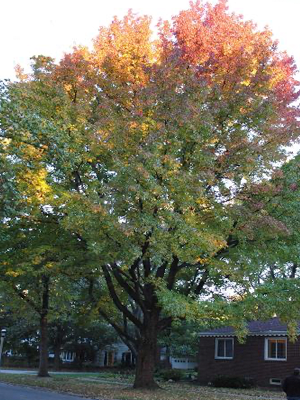
Liquidambar styraciflua (Sweet gum). Exposure: sun/part shade. Soil requirements: moist. Deer resistance: low. Habitat: mixed woods/old fields Specifics: suitable as street tree; low maintenance; excellent shade, lawn or park tree; needs space.
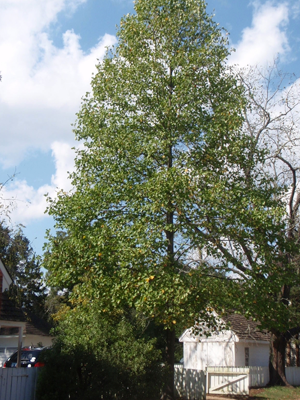
Liriodendron tulipifera (Tulip tree). Exposure: sun/part shade. Soil requirements: moist. Deer resistance: medium. Habitat: woodland. Specifics: fast straight growth, narrow crown, copes well with climate change.
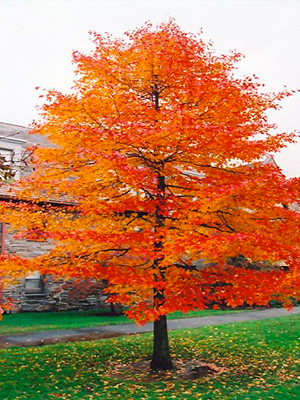
Nyssa sylvatica (Black-gum, Black tupelo). Exposure: part shade/shade. Soil requirements: moist/wet. Deer resistance: medium. Habitat: woodland/thickets. Specifics: Good for side and back yards. Striking early leaf color. Copes well with climate change.
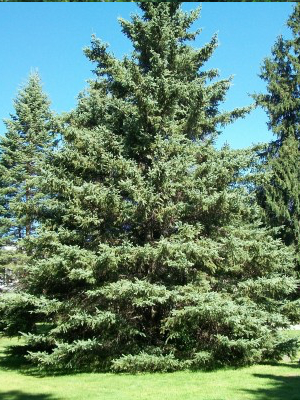
Picea glauca (White spruce). Exposure: sun. Soil requirements: medium/acidic. Deer resistance: high. Habitat: shelter belt, poor soil. Specifics: conifer, handsome as a single specimen tree, grouped on larger sites or well-spaced in rows for borders. Intolerant of urban stresses (pollution, salt spray).
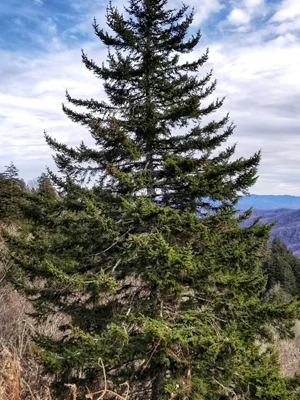
Picea rubens (Red spruce). Exposure: shade. Soil requirements: acidic/well drained. Deer resistance: high. Habitat: upland/woodland. Specifics: shallow rooted, prone to wind damage, handsome ornamental.
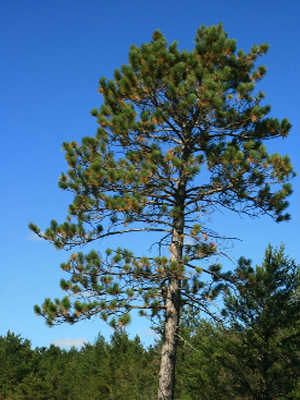
Pinus resinosa (Red pine). Exposure: sun. Soil requirements: dry/well drained/poor/sandy. Deer resistance: high. Habitat: upland/woodland .Specifics: conifer, shade tree.
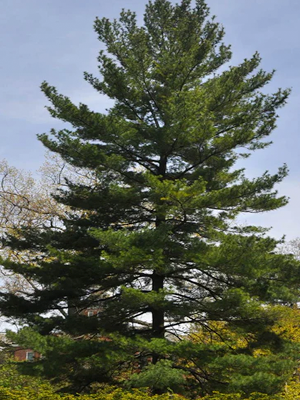
Pinus strobus (White pine). Exposure: sun. Soil requirements: well drained/sandy. Deer resistance: high. Habitat: upland/woodland. Specifics: conifer, handles different conditions well.
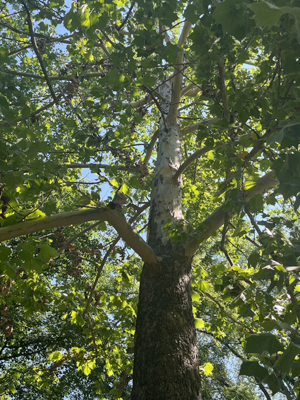
Platanus occidentalis (American sycamore). Exposure: sun/partial shade. Soil requirements: moist/silty/sandy. Deer resistance: medium. Habitat: lowland, moist woods; floodplains. Specifics: massive trunk, interesting bark, open crown of huge, crooked branches, susceptible to blight,
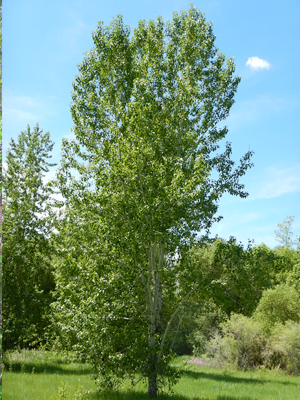
Populus balsamifera (Balsam poplar). Exposure: sun. Soil requirements: moist. Deer resistance: medium. Habitat: groves. Specifics: tall tree with narrow, open crown of upright branches, can’t handle shade, fast growing, nice smell.
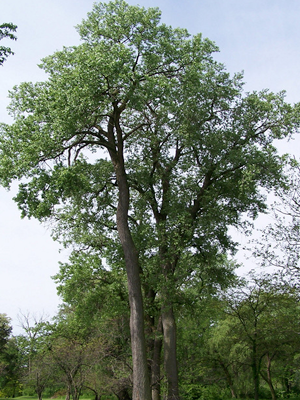
Populus deltoides (Eastern cottonwood). Exposure: sun. Soil requirements: wet. Deer resistance: low. Habitat: along waterways/wetland. Specifics: large, fast growing, typically growing along streams and rivers and in lowland areas and swamps, Seeds with silky white hairs give the appearance of cotton.
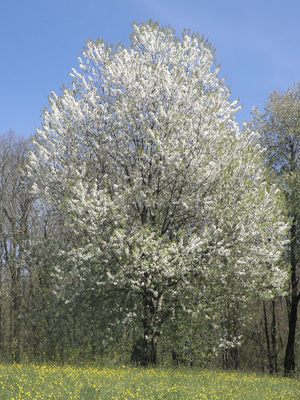
Prunus serotina (Black cherry). Exposure: part sun/part shade/shade. Soil requirements: dry/medium/moist. Deer resistance: medium. Habitat: woodland edge/fields. Specifics: Easy tree, fast growing, important tree for wildlife, copes well with climate change.
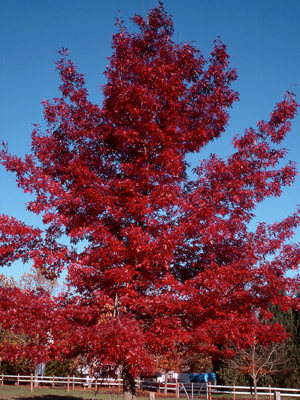
Quercus coccinea (Scarlet oak). Exposure: sun/part sun. Soil requirements: dry/well drained. Deer resistance: low. Habitat: fields/roadsides. Specifics: suitable for road sides. Important tree for wildlife, glossy green in summer turning to scarlet in fall. Salt tolerant.
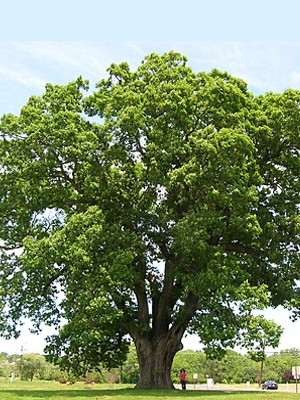
Quercus alba (White oak). Exposure: sun. Soil requirements: dry/medium/moist. Deer resistance: low. Habitat: dry upland slopes and ledges as well as lowland valleys and ravines. Specifics: Slow growing majestic specimen tree, important tree for wildlife, susceptible to oak wilt, copes well with climate change.
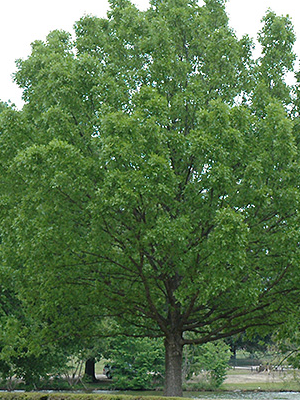
Quercus lyrata (Overcup oak). Exposure: sun. Soil requirements: moist/clay. Deer resistance: low. Habitat: bottomland tree. Specifics: Native to Southeast, deep green leaves, suitable as street tree, No serious insect or disease problems.
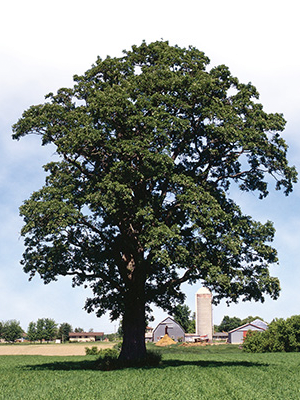
Quercus macrocarpa (Bur oak). Exposure: sun/shade. Soil requirements: dry/medium/rich. Deer resistance: low. Habitat: prairie grassland. Specifics: drought tolerant. Can be shrubby, grows very wide. Important tree for wildlife, suitable as street tree. Don’t plant near parking areas.
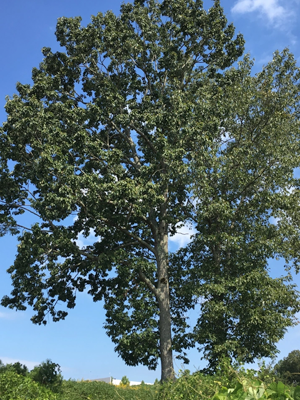
Quercus montana (Chestnut oak). Exposure: part sun/shade. Soil requirements: rich/well drained. Deer resistance: low. Habitat: ridge top. Specifics: Low-maintenance, long-lived tree, tolerates drought.
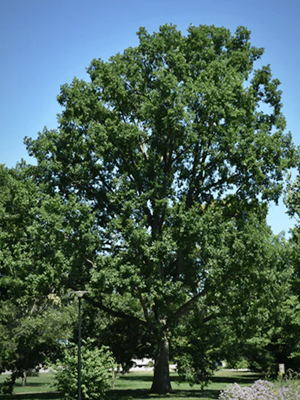
Quercus muehlenbergii (Chinquapin oak). Exposure: sun. Soil requirements: dry/well drained. Deer resistance: low. Habitat: upland woodlands. Specifics: attractive tree, relatively fast growing and relatively free of diseases and pests. Important tree for wildlife, suitable as street tree.
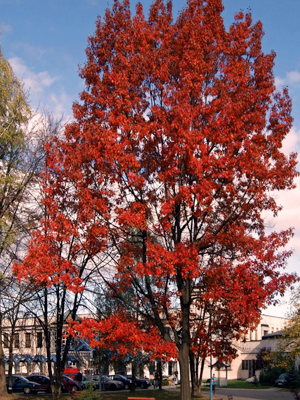
Quercus rubra (Red oak). Exposure: sun/part sun. Soil requirements: dry/medium/moist. Deer resistance: medium. Habitat: wooded slopes. Specifics: fastest growing oak. important tree for wildlife, susceptible to oak wilt, copes well with climate change.
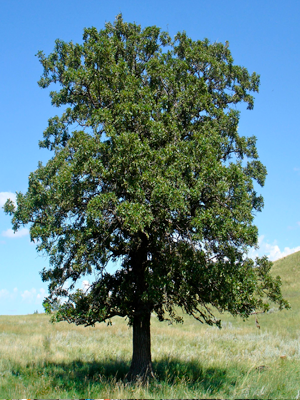
Quercus velutina (Black oak). Exposure: part sun/shade. Soil requirements: sandy/well drained/rich. Deer resistance: low. Habitat: upland woods. Specifics: Large with spreading branches to form an open crown that is often quite irregular, important tree for wildlife, prone to structural damage and decay.
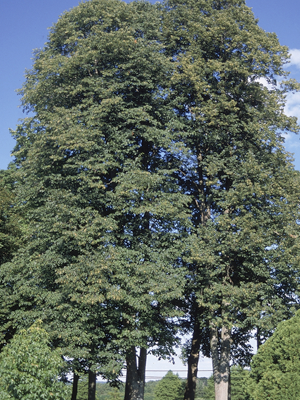
Tilia americana (American linden/basswood). Exposure: sun/shade. Soil requirements: medium/moist/well drained. Deer resistance: low. Habitat: woodland. Specifics: fast growing and long lived. Very fragrant, suitable as street tree, but intolerant of city conditions.
Source: Healthy Yards www.healthyyards.org Questions? Contact us at info@healthyyards.org